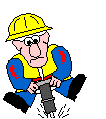The Vertical
Stabilizer is comprised of two premolded components which are joined
together forming the upper portion of the rear fuselage, the dorsal
fin, and the vertical stabilizer.
|
 |
Trial fit of the vertical
stabilizer prior to installation of the horizontal stabilizer.
The cutout for the horizontal stabilizer has been made and the
supports for the horizontal stabilizer are also shown temporarily in
place. I recommend holding onto those cutout portions and using
them for filler once the horizontal stabilizer is installed. |
 |
After the Horizontal
Stabilizer is mounted ,the right side of the Vertical Stabilizer is
mounted and bonded to the Vertical Spar and the Horizontal Stabilizer.
Prior to installation of the rib the Communication Antenna should
be installed. The above photo shows the full spread of the
communications antenna. The one used is from Bob Archer and was
glassed into place with single ply bids. As can be seen from the
above photo, it just barely fits. |
|
 |
I tried several different mounting arrangements but all
had some conflict. The black marks on the photo above show the
only alternate mounting which would work as well. I picked the above
arrangement since I was concerned that the electrical bonding cable
which will run up the rear stabilizer spar would interfere with the
signal.
|
|

|
Now if this looks a bit
strange, did I mention that my wife had ask that I install in-plane
plumbing? This shot shows several additions which I have
incorporated. First the plumbing, it's conduit for the electrical
wiring to the rear strobe and trim servos. The idea is to provide
an easy, non-restricted path for running the electrical wiring.
Like the conduit in the wings, this provides a clear path for the
wiring and one which can be serviced in the future. The curved
panel is an air baffle to route the incoming air from the NACA scoop
and through the tube just above the horizontal stabilizer. The
NACA air scoop can be seen just in front of the bulkhead. The
outlet from the scoop is covered by a wire screen to keep unwanted
critters from getting in. |

|
What can't been seen here
is the drain tube which is in the lower corner against the fuselage
wall. This will allow any moisture accumulation to be removed.
Prior to closure, the air box was closed with a prepreg panel and
glassed into place. I closed it out separately because I felt it
would be impossible to get a good seal on the air box with the other
side of the vertical stabilizer. This way I could seal the box
without having to make the airbox airtight within the stabilizer.
Prior to closure I also potted an epoxy-flox mixture over the
antenna connections. |
 |
I used a number of
different clamping methods to close out the vertical stabilizer and the
fuselage section. The strap clamps were great for putting
pressure on the area around the bulkhead and for the lower portion of
the stabilizer. The vertical portion of the stabilizer I used
some wood clamps and a 1 x 2 hardwood strip. The wood clamps
worked great because they can be closed in on the same angle as the
stabilizer. The hardwood strip helps keep the sides of the
stabilizer nice and straight with even pressure along the stabilizer
spar. I used matching 1x2 wood strips on the inside and outside
of the fuselage held tightly together with drywall screws to clamp the
fuselage together.  |

